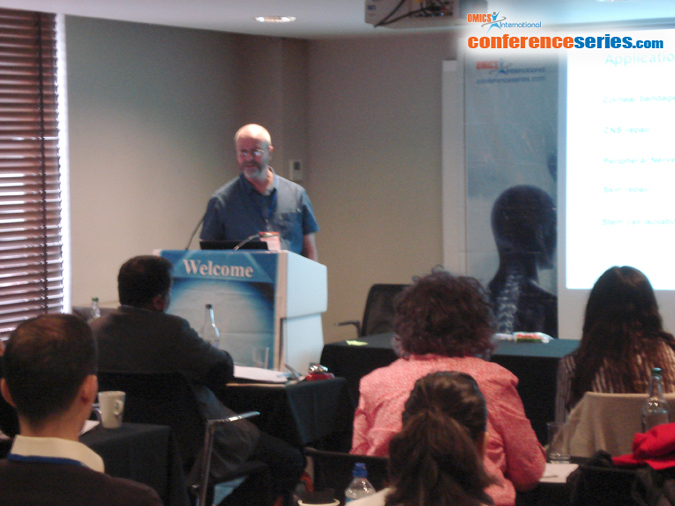
Donald A Wellings
SpheriTech Ltd, UK
Title: Novel bioresorbable scaffolds for 3D cell culture and tissue repair
Biography
Biography: Donald A Wellings
Abstract
Tissue engineering is a relatively new tool available to scientists, first appearing in the early 1990’s (1). It was originally conceived as a potential solution to the lack of availability of donor organs and is now also additionally considered as an alternative strategy to animal testing for drug and chemical safety models. A three dimensional (3D) scaffold provides a support for cellular growth in such a way that specific cells form a 3D matrix of tissue which in turn can be transplanted into a patient to allow regeneration of the specified region. Spheritech have developed a novel biopolymer which has found many applications, amongst them is the formation of self-assembled macroporous biodegradable constructs specifically designed to support 3D cell culture. The porosity of the biopolymer is controlled by self-assembly in such a manner as to accommodate cell and nutrient penetration within. The unique features of the 3D cell culture scaffold developed by the company include the fact that it is composed entirely of naturally occurring components. The main backbone of the polymer is poly-ε-lysine which is an edible, non-toxic material currently manufactured on multi-ton scale and used predominantly as a preservative in foodstuffs. Poly-ε-lysine can be readily cross-linked with any multi-functional carboxylic acid and in particular we have found that the naturally occurring bis-carboxylic acids such as sebacic acid and dodecanedioic acid impart advantageous properties on 3D scaffolds. Ultimately the polymer is susceptible to degradation by protease activity to produce lysine and the fatty acid. This new scaffold is being developed for a range of applications including wound dressings, peripheral nerve repair, CNS repair, kidney repair, bone repair and cartilage repair, to name a few. The polymer and these applications will be discussed in detail.


